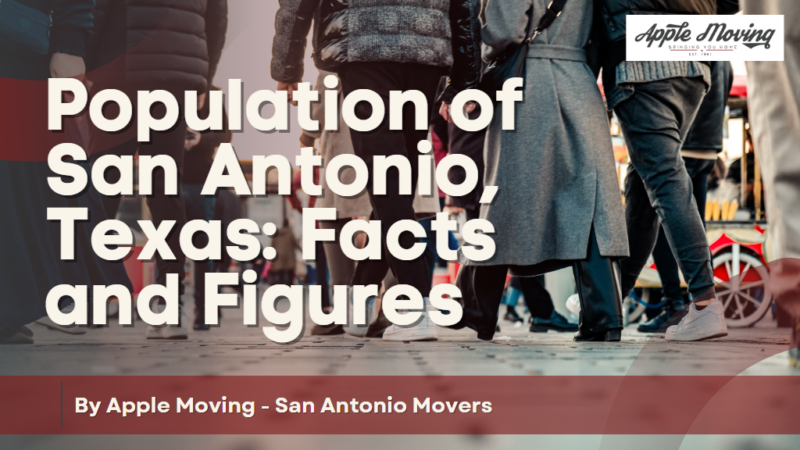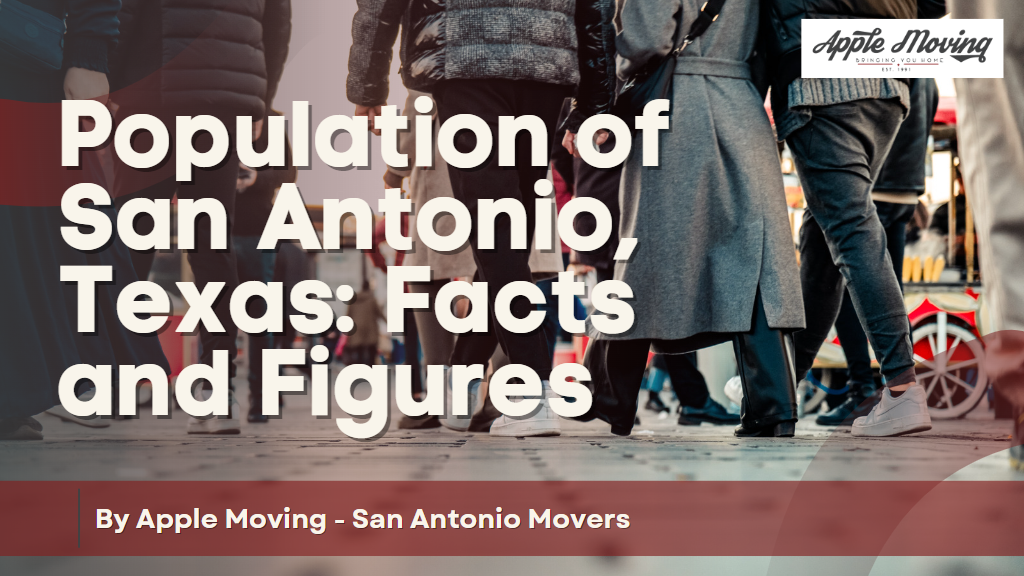Population of San Antonio, Texas: Facts and Figures
The bustling metropolis of San Antonio, Texas, is located in the southern part of the United States. San Antonio is a diverse city with a rich history, vibrant culture, and excellent cuisine. San Antonio is the seventh-largest metropolitan area in the United States and the second-largest city in Texas, with a population of more than 1.5 million population. As one of the fastest-growing cities in the country, San Antonio is likely to witness an increase in this figure.
Population Growth
San Antonio has had a tremendous increase in population during the past few decades, according to the US Census Bureau. In 2050, San Antonio’s population is predicted to reach 2.4 million.
One of the main reasons for the city’s growing population is its robust economy. The city’s diverse economy includes the healthcare, military, financial, and tourism sectors. This has led to a significant increase in job possibilities and the local population.
Demographics
San Antonio has a diverse population with various racial and ethnic backgrounds. The 2020 U.S. U.S. Census results, released. According to the census, the city’s racial and ethnic composition is as follows:
- Hispanic or Latino: 64.8%
- White: 26.6%
- Black or African American: 6.2%
- Asian: 2.9%
- Other: 1.5%
Many aspects of San Antonio’s life reflect its diversity, including the city’s cuisine and music, as well as its festivals and cultural events.
Age Distribution
The population of San Antonio is diversified in terms of age, with a sizable proportion falling into the younger age groups. The 2020 U.S. The city’s age distribution is as follows, according to the Census Bureau:
- Under 18 years: 25.9%
- 18 to 24 years: 8.8%
- 25 to 44 years: 33.7%
- 45 to 64 years: 20.9%
- 65 years and over: 10.7%
This distribution reflects the city’s massive and increasing young population, which is lured to San Antonio’s robust employment market and low cost of living.
Key Factors That Affect San Antonio’s Population Growth
San Antonio, Texas, is a thriving metropolis with a diversified population and a colorful history. It is one of the fastest-growing cities in America and relatively close to Austin, with a population of about 1.5 million. Its rise may be traced back to several significant events, including:
- Strong Economy
Its strong economy is a primary factor contributing to San Antonio’s population growth. The city has a diverse economy anchored by healthcare, the military, and tourism industries. According to the Bureau of Labor Statistics, San Antonio’s unemployment rate is consistently lower than the national average, making it an attractive location for job seekers. This, in turn, has led to a significant increase in the number of people moving to the city for work opportunities.
- Affordable Housing
Another critical factor contributing to San Antonio’s population growth is its affordable housing market. Compared to other major cities in the United States, San Antonio’s cost of living is relatively low, with affordable housing options available throughout the city. The city’s affordable housing market has attracted many individuals and families seeking a more affordable alternative to other large cities in the United States.
- Quality of Life
San Antonio’s high quality of life is also a significant factor in population growth. The city offers various cultural and recreational activities, including museums, parks, and historic sites. The city is also home to several renowned universities, including the University of Texas at San Antonio and Trinity University, making it an attractive location for students seeking higher education.
In addition, San Antonio is known for its warm climate and beautiful scenery. The city is situated near several state parks, including the scenic Texas Hill Country, which offers a variety of outdoor activities such as hiking, camping, and swimming.
- Growing Tourism Industry
The city’s growing tourism industry is also vital to San Antonio’s population growth. The city has several popular tourist attractions, including the Alamo, River Walk, and SeaWorld San Antonio. These attractions draw millions of visitors to the city each year, creating jobs and driving economic growth.
In recent years, San Antonio has also become a popular destination for conventions and conferences, attracting business travelers worldwide. This has helped to boost the city’s economy and increase its international visibility, further contributing to its population growth.
Impact of the Population on San Antonio’s Economy and Infrastructure
San Antonio, Texas, is experiencing rapid population growth, significantly impacting the city’s economy and infrastructure. Here are some key points on how the population growth is affecting the city:
Economic Impact:
- The population growth in San Antonio has positively impacted the city’s economy. As the population grows, the demand for goods and services increases, creating new businesses and job opportunities.
- According to the U.S. Census Bureau, the median household income in San Antonio has increased over the past decade, indicating that the city’s economy is growing.
- The healthcare, military, and tourism industries are significant regional employers and benefit from population growth.
- With a growing population, there is a need for more healthcare facilities and services, creating job opportunities for medical professionals.
- The city’s military is also a significant employer, with several military bases in and around San Antonio.
- The tourism industry benefits from the population growth, with the increased demand for tourist attractions and accommodations creating jobs in the hospitality and tourism sectors.
Infrastructure Impact:
- The population growth in San Antonio is putting pressure on the city’s infrastructure, requiring expansion to accommodate the growing population.
- There is a need for more housing, schools, and other public facilities as more people move to the area.
- The city has responded to this growth by investing in new infrastructure projects, such as the San Antonio International Airport expansion, the construction of new highways and roads, and the improvement of public transportation.
- The growing population has also increased the demand for water and energy resources and strained the city’s infrastructure. The city has implemented several water conservation and energy efficiency programs to address this.



